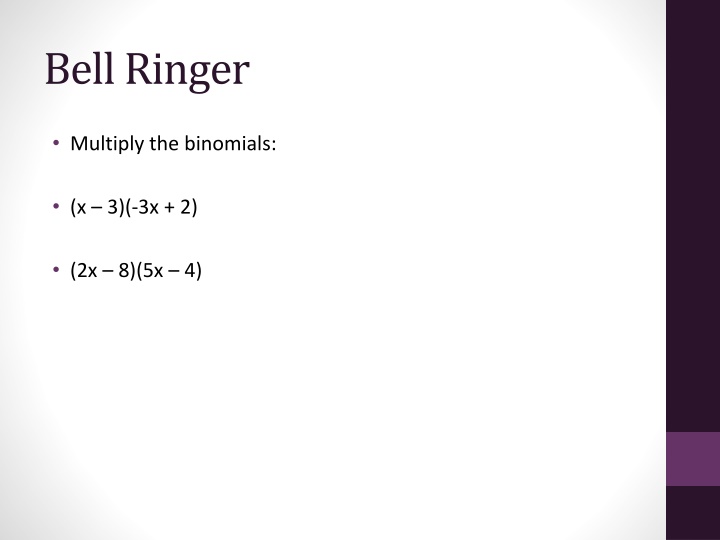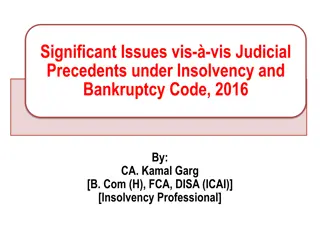Practical Challenges and Remedies in Insolvency Resolution Process
This content discusses practical challenges and remedies before and after insolvency resolution processes, including delays in admission applications, lack of information during corporate insolvency, adherence to timelines, third-party securities, preferential transactions, and issues in resolving diversified businesses.
Download Presentation

Please find below an Image/Link to download the presentation.
The content on the website is provided AS IS for your information and personal use only. It may not be sold, licensed, or shared on other websites without obtaining consent from the author.If you encounter any issues during the download, it is possible that the publisher has removed the file from their server.
You are allowed to download the files provided on this website for personal or commercial use, subject to the condition that they are used lawfully. All files are the property of their respective owners.
The content on the website is provided AS IS for your information and personal use only. It may not be sold, licensed, or shared on other websites without obtaining consent from the author.
E N D
Presentation Transcript
Bell Ringer Multiply the binomials: (x 3)(-3x + 2) (2x 8)(5x 4)
Factoring Polynomials Mr. Haupt CC.2.1.8.E.1
So far The past few days we have been multiplying binomials to get polynomials. Now we are going to be working backwards from a polynomial back to binomials. You need to remember how to find the factors of a number.
For Example The best way to learn these is by just doing them. x2+ 7x 44 The first thing we need to do is list out all the ways we can multiply to get 44. 1 x 44 2 x 22 4 x 11
x2+ 7x 44 Then we need to see which of those sets of numbers add or subtract to give me the number in the middle, 7. If I use the factors 4 and 11, I can subtract them to get the 7 I need. And since there is no number in front of the x2I know that the only way to multiply to get that, is to multiply x and x. So now we know this much: (x 4)(x 11) But how do we know if we are adding or subtracting?
To find out what signs go where, we need to look at the original polynomial. x2+ 7x 44 This sign tells me if the signs in my answer are the same or different. Addition means they are the same, subtraction means they are different This sign tells me what the signs will be. If the signs are the same, this sign tells me which one to use. If the signs are not the same, this sign tells me what sign to put on the bigger number.
So what is the answer? I ve gone from x2 + 7x 44 to a partial answer of: (x 4)(x 11) I still need to fill in my signs. The minus, or negative, in front of the 44 tells me the two signs will be different. The plus, or positive, sign in front of the 7 tells me that the bigger number gets the positive. 11 is bigger than 4, so that gets the positive and the 4 gets the negative. My answer: (x 4)(x + 11)
More Examples x2 + 12x + 36 x2 14x + 48 x2 24x - 25























